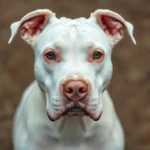
Introduction
Dog breeds come in an astonishing variety, each with unique traits, appearances, and temperaments. Understanding these differences is crucial for potential pet owners as they seek a companion that matches their lifestyle and preferences. Among the myriad of breeds is the Giant German Shepherd, a remarkable variant of the classic German Shepherd known for its impressive size and loyal disposition.
This breed has gained popularity in recent years, not just for its stature but also for its intelligence, versatility, and affectionate nature. In this article, we will delve into the characteristics, history, care needs, and living conditions ideal for the Giant German Shepherd.
Understanding the Giant German Shepherd
Definition and Characteristics
The Giant German Shepherd is defined primarily by its size. While standard German Shepherds typically weigh between 50 to 90 pounds and stand around 22 to 26 inches tall, the giant variant can weigh up to 120 pounds or more and stand as tall as 30 inches at the shoulder.
These dogs exhibit many distinguishing features, including:
– Size: The most apparent difference, with giants often being 25-30% larger than their standard counterparts.
– Coat: They can have short, medium, or long hair, generally dense and double-layered.
– Color: Common colors include black and tan, sable, and solid black, but variations can occur.
Origin and History
The German Shepherd breed originated in Germany in the late 19th century, primarily bred for herding and protection. The Giant German Shepherd variant emerged as breeders aimed to develop larger, more robust dogs with enhanced physical capabilities.
Influential breeders like Max von Stephanitz, who is credited with establishing the German Shepherd breed, laid the groundwork for the breed’s development. Later, specific breeding practices focused on size led to the creation of the giant variant, appealing to those who desired a more imposing presence in their canine companions.
Physical Attributes
Size and Build
Giant German Shepherds are among the largest dog breeds, with males typically weighing between 90 to 120 pounds and females ranging from 70 to 100 pounds. Their build is muscular and robust, with a strong bone structure that sets them apart from other large breeds like the Rottweiler or Great Dane.
When compared to the standard German Shepherd, the giant variant is not only taller but also broader, giving it a more substantial appearance that commands attention.
Coat and Colors
The coat of a Giant German Shepherd can vary significantly. Most commonly, they possess a double coat that can be:
– Short: Low maintenance, requires occasional brushing.
– Medium: More prone to shedding, needs regular grooming.
– Long: Requires frequent brushing to prevent matting and tangles.
As for colors, while black and tan is the most recognized, you’ll also find sable, solid black, and even blue or liver variations.
Health and Lifespan
The average lifespan of a Giant German Shepherd is around 9 to 13 years, which is somewhat shorter than that of standard German Shepherds, partly due to their larger size. They are susceptible to specific health issues, including:
– Hip Dysplasia
– Elbow Dysplasia
– Degenerative Myelopathy
– Bloat
Regular vet check-ups and a healthy lifestyle are essential to maintain their well-being.
Temperament and Behavior
General Temperament
The Giant German Shepherd is known for its loyal and protective nature, making it an excellent family dog. They are typically confident, courageous, and intelligent, often displaying a gentle demeanor with children. However, their protective instincts mean they can be wary of strangers, making early socialization crucial.
Intelligence and Trainability
Giant German Shepherds rank among the most intelligent dog breeds, often excelling in obedience training and various dog sports. Their eagerness to please makes them highly trainable, but it’s essential to use positive reinforcement methods. Consistency, patience, and early training can yield excellent results, turning them into well-behaved companions.
Socialization Needs
Socializing a Giant German Shepherd is critical for developing a well-rounded dog. Introduce them to various environments, people, and other animals from a young age. Regular exposure helps mitigate potential aggression towards strangers or unfamiliar pets.
Care and Maintenance
Nutrition and Diet
Providing a balanced diet is vital for the health of your Giant German Shepherd. High-quality dog food, rich in protein and nutrients, is recommended. Portion sizes will vary based on age, weight, and activity level, but generally, adult dogs require 4 to 6 cups of food daily, split into two meals.
Exercise Requirements
Daily exercise is crucial for a Giant German Shepherd to maintain physical and mental health. They require at least 1 to 2 hours of vigorous activity each day. Activities can include:
– Long walks or runs
– Hiking
– Agility training
– Fetch or frisbee games
Engaging them in interactive play fosters a strong bond and keeps them mentally stimulated.
Grooming and Hygiene
Grooming is an essential aspect of caring for a Giant German Shepherd. Depending on their coat type, grooming frequency will vary:
– Short-haired: Brush weekly.
– Medium-haired: Brush every few days.
– Long-haired: Brush several times a week.
Regular baths, nail trimming, and dental care are also important for overall hygiene.
Living with a Giant German Shepherd
Ideal Living Conditions
Giant German Shepherds thrive in homes with ample space, ideally with a large yard. While they can adapt to apartment living, sufficient daily exercise is imperative. Access to outdoor areas where they can run and play is beneficial for their physical and mental well-being.
Interactions with Other Pets
Generally, Giant German Shepherds can coexist well with other pets if properly socialized from an early age. Their protective nature can lead to dominance, so introducing them to other animals should be handled carefully. Supervise initial interactions and create a safe environment for all pets involved.
Common Misunderstandings
Myths About Giant German Shepherds
There are several myths surrounding the Giant German Shepherd. One common misconception is that they are inherently aggressive. In reality, with proper training and socialization, they can be gentle giants, making them suitable as family pets.
Differences from Standard German Shepherds
While both variants share similar traits, the primary differences lie in size, temperament, and care needs. Giant German Shepherds may require more space and have slightly different exercise and dietary needs. Potential owners should consider these factors when deciding which variant suits their lifestyle better.
Conclusion
The Giant German Shepherd is a unique and impressive breed that offers a blend of loyalty, intelligence, and protective instincts. They can be ideal companions for those willing to invest the time and effort into training, socialization, and care. Their size and presence make them particularly appealing, but it’s essential to understand their specific needs to foster a happy and healthy relationship.
Owning a Giant German Shepherd can be a rewarding experience, provided owners are committed to responsible pet ownership and proper care. With the right environment and attention, these magnificent dogs can thrive, bringing joy and companionship to their families for many years to come.








